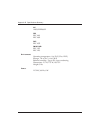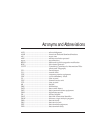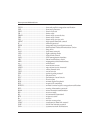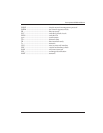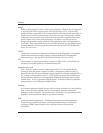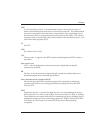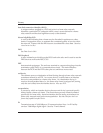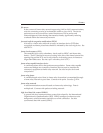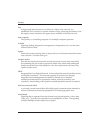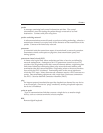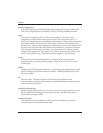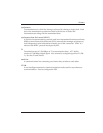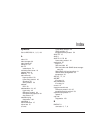
120 FSU User Manual 61200.130L1-1
Glossary
data link connection identifier (DLCI)
A unique number assigned to a PVC end point in a frame relay network.
Identifies a particular PVC endpoint within a user's access channel in a frame
relay network and has local significance only to that channel.
discard eligibility (DE)
A user-set bit indicating that a frame may be discarded in preference to other
frames if congestion occurs, to maintain the committed quality of service within
the network. Frames with the DE bit set are considered Be excess data. See also
excess burst size (Be).
DSU
See Data Service Unit.
DSU loopback
A telco initiated test which loops the DSU back to the telco and is used to test the
DDS circuit as well as the DSU/CSU.
DTE
data terminal equipment. The end-user terminal or computer that plugs into the
termination point (DCE) of a communications circuit. The main difference
between the DCE and the DTE is that pins two and three are reversed.
end device
The ultimate source or destination of data flowing through a frame relay network
sometimes referred to as DTE. As a source device, it sends data to an interface
device for encapsulation in a frame relay frame. As a destination device, it
receives de-encapsulated data (i.e., the frame relay frame is stripped off, leaving
only the user's data) from the interface device. Also see DCE.
encapsulation
A process by which an interface device places an end device's protocol-specific
frames inside a frame rely frame. The network accepts only frames formatted
specifically for frame relay; therefore interface devices acting as interfaces to a
frame relay network must perform encapsulation. See also interface device or
frame relay capable interface device.
E1
Transmission rate of 2.048 Mbps on E1 communications lines. An E1 facility
carries a 2.048 Mbps digital signal. See also T1 and channel.



